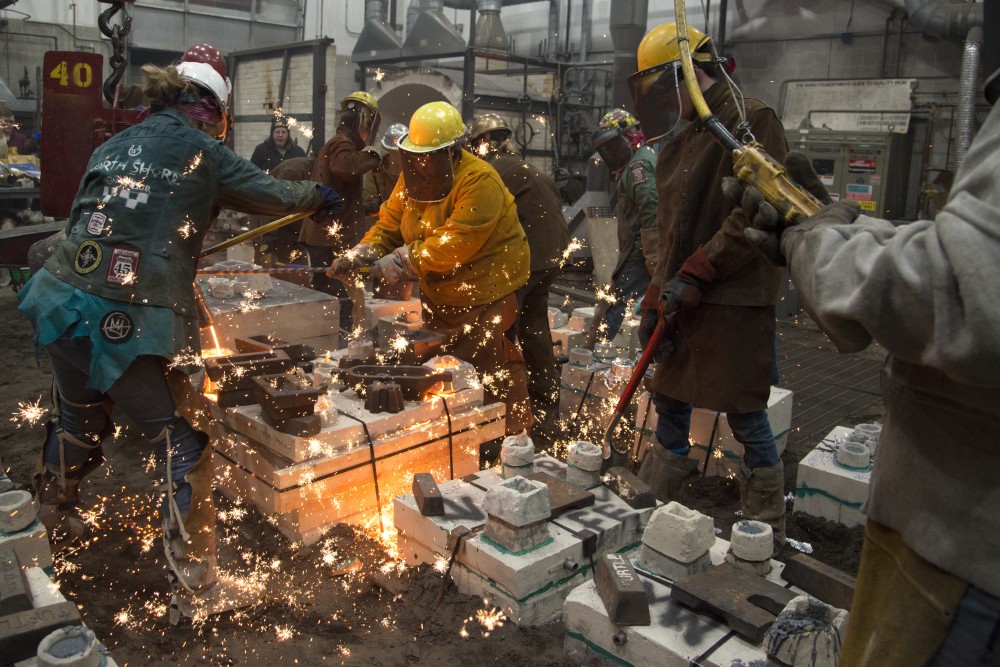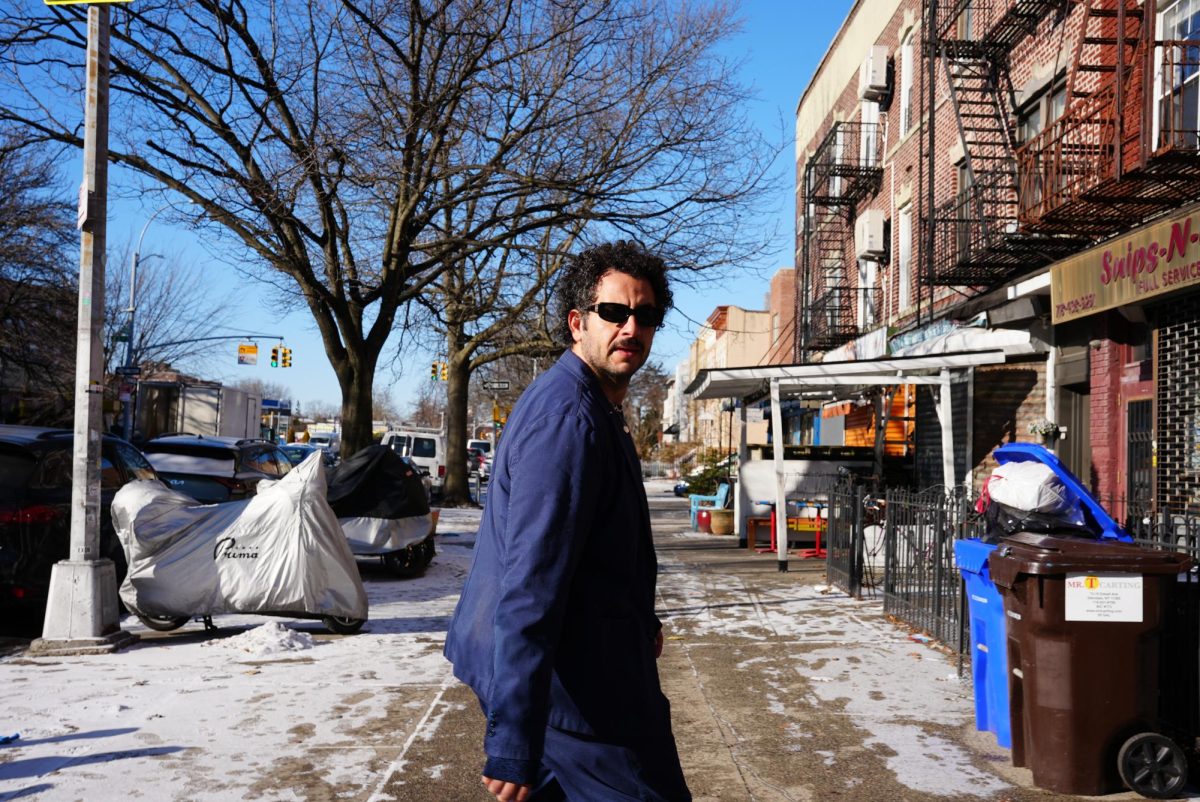Not many people know that the University of Minnesota houses a foundry inside the depths of the Regis Center for Art, and even fewer know that students operate the heavy machinery. On Tuesday night, the University foundry bustled with students and spectators eager to witness the 31st Annual Fall Iron Pour.
A group of 40 made up of students, faculty and visiting artists worked all night to transform molten-hot iron into sculptural art. To withstand the furnace temperatures of over 2,400 degrees Fahrenheit, they wore protective leather overalls, coats and face masks. Over the course of the night, the crew poured over 100 sand molds.
Senior BFA student Stephen Edstrom is a former glass blower with experience working in bronze.
“I had heard great things about the U of M’s foundry and art program. I signed up for the metal casting class and was introduced to iron casting. I instantly knew I was in the right place,” Edstrom said. “The thing I enjoy most about foundry is the community that surrounds it. Foundry is like a team sport mixed with fire and a dance. I like the idea that everyone is working together to cast everyone’s work.”
For senior studio art major Rose Von Muchow, the foundry was a place where art met community.
“The foundry is really hands on and community based. I love having a community to help me make art. I think it’s much more special to me than making art by myself,” Von Muchow said.
Von Muchow first became interested in the metal work after learning how to weld in her introduction to sculpture class. She began as a painter whose work concerned portrayals of the body and figures. Now, she makes wax and sand-mold castings of her and others’ bodies to fill with molten metal.
“I think [the foundry] is kind of unique because it gives you a chance to really know the industrial processes behind the artwork you’re making,” Von Muchow said.
The first pour of the night began around 4:30 p.m. and the event wrapped up around 10 p.m. Sand molds belonged to faculty and students, including visiting artist Hannes Brunner from Berlin, Germany.
The University of Minnesota foundry has been established for over 50 years, and Professor Wayne Potratz, who ran the foundry until recently, first started iron pours. Today, assistant sculpture professor Tamsie Ringler heads the foundry and is the University’s only foundry professor.
“I think because so much of student academic work now is on computers, people really enjoy the hands on and physical making of something permanent. Once you cast something in iron, it can last a millennium,” Ringler said.
In her own work, Ringler combines metalwork and performance. She considers the potential for what metal is and can be, and the long history that is attached to specific metals.
“As a teacher, I think what I find really rewarding about the foundry is that it’s a transformation of a metal solid to liquid state, and there’s a lot of energy involved in it. It’s a catalyst of transformation for students as well,” said Ringler. “I really see teaching as a part of my sculptural practice.”










